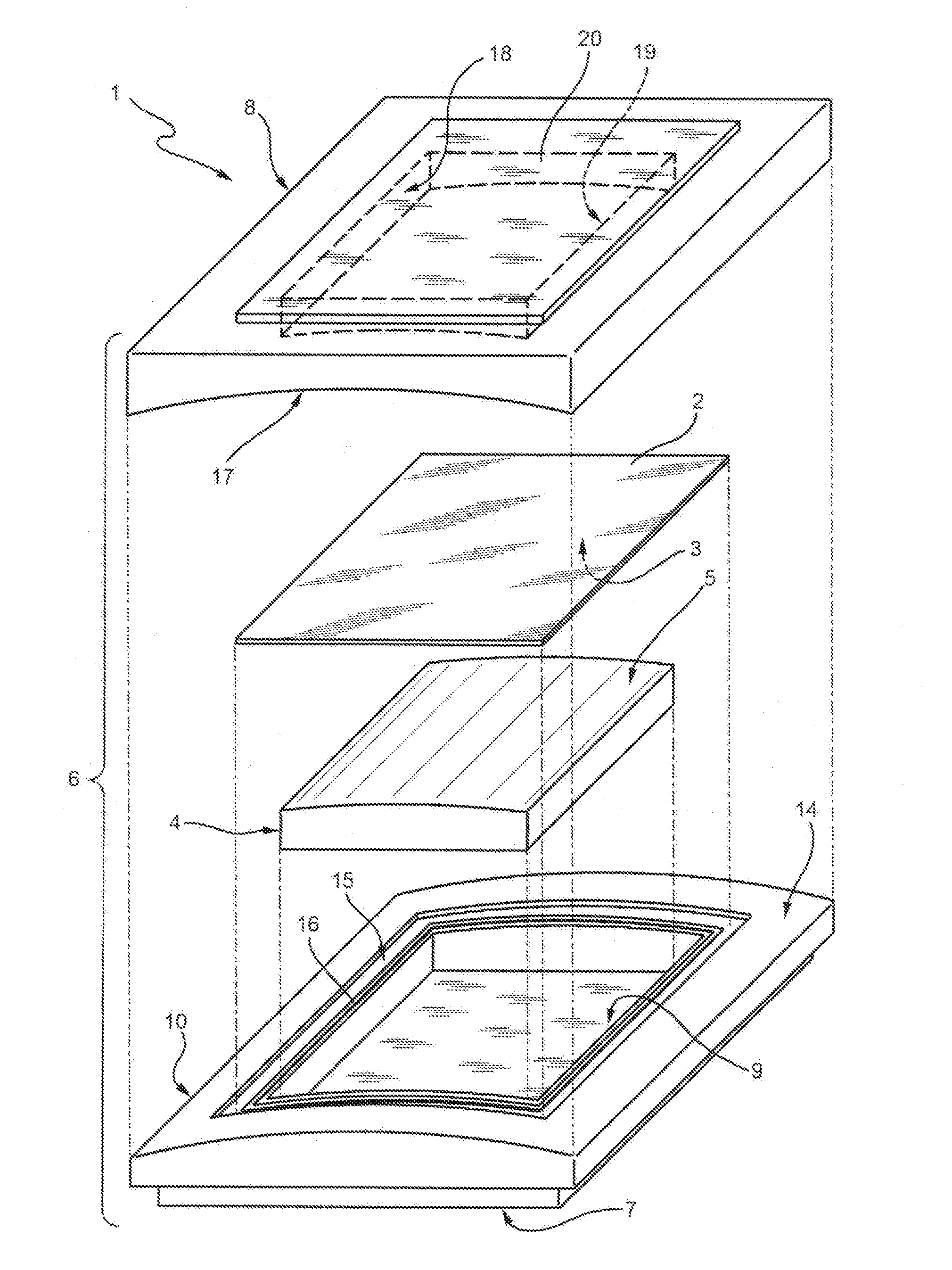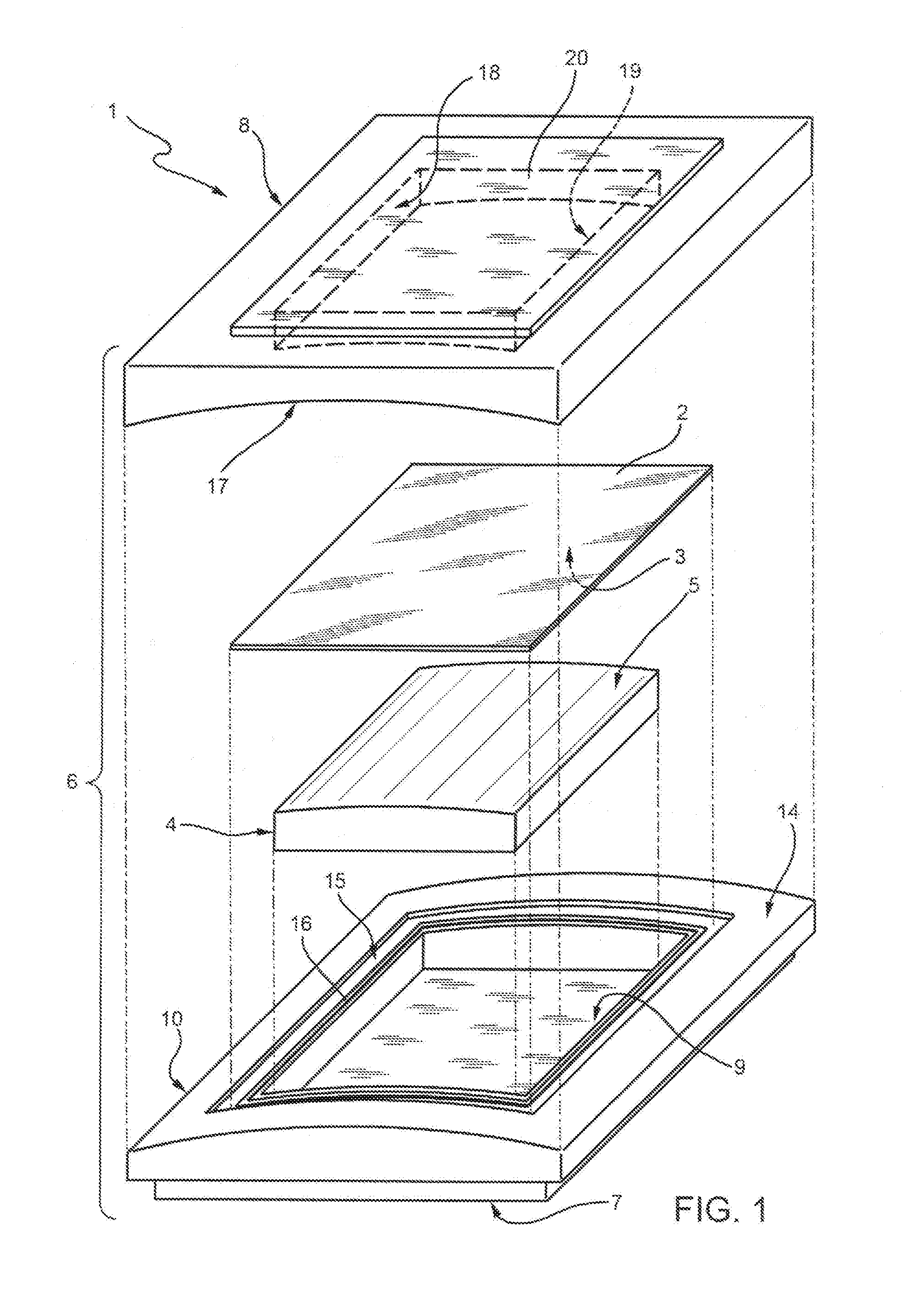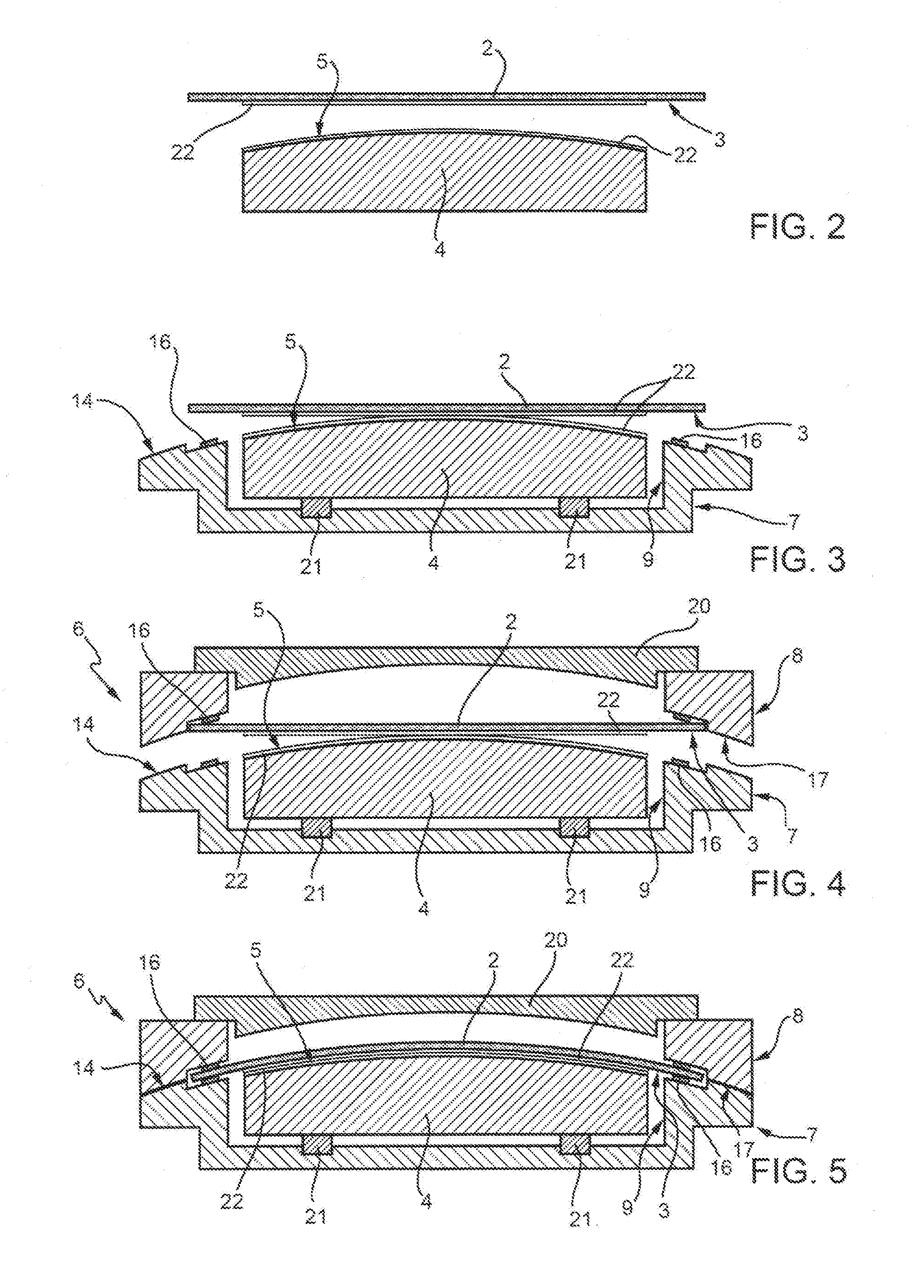A process for manufacturing an optical element by hot - forming a glass sheet
- Summary
- Abstract
- Description
- Claims
- Application Information
AI Technical Summary
Benefits of technology
Problems solved by technology
Method used
Image
Examples
Embodiment Construction
[0019]With reference to FIG. 1, reference numeral 1 is a device for implementing the hot-forming process of a glass sheet 2 according to the present invention.
[0020]The glass sheet 2 is a semi-finished starting product for making an aspherical (for example, parabolic) mirror sector for an X-ray grazing incidence telescope by means of the method of the invention.
[0021]For example, the size of the glass sheet 2 is 340×340 mm and the thickness is equal to 0.4 mm. Glasses which may be used for this purpose are, for example, D263 glass and AF32 glass made by SCHOTT AG. In FIG. 1, reference numeral 3 is the optical surface of the glass sheet 2, i.e. the face of the glass sheet adapted to form a portion sector of the optical surface of the mirror, in use.
[0022]The device 1 comprises a mold 4 having an upper surface 5 which reproduces the shape to be given to the optical surface 3 of the glass sheet 2 by means of the process described below (direct slumping). It is worth noting that the pro...
PUM
| Property | Measurement | Unit |
|---|---|---|
| Time | aaaaa | aaaaa |
| Fraction | aaaaa | aaaaa |
| Fraction | aaaaa | aaaaa |
Abstract
Description
Claims
Application Information
 Login to view more
Login to view more - R&D Engineer
- R&D Manager
- IP Professional
- Industry Leading Data Capabilities
- Powerful AI technology
- Patent DNA Extraction
Browse by: Latest US Patents, China's latest patents, Technical Efficacy Thesaurus, Application Domain, Technology Topic.
© 2024 PatSnap. All rights reserved.Legal|Privacy policy|Modern Slavery Act Transparency Statement|Sitemap



